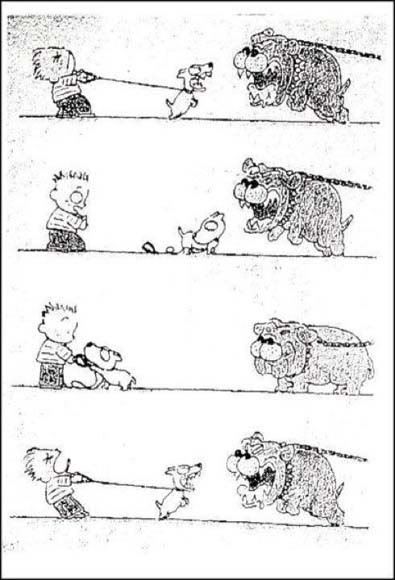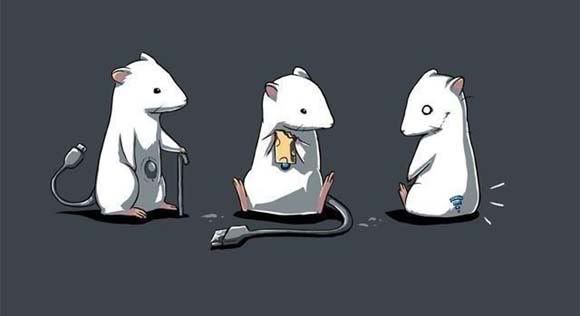Every living thing in this world has a brain. But the human brain is some what special and unique. It doesn't mean that it's the largest. It's special because it does some special works. It lets you think, imagine, speak and almost everything you try to do. The human brain does some incredible tasks including the following
- It controls body temperature, blood pressure, heart rate and breathing.
- It accepts signals from your different senses (seeing, hearing, smelling, tasting and touching).
- It manages your physical movement when walking, talking, standing or sitting.
- It helps you think, dream, reason and experience emotions.
This amazing organ coordinates, controls and regulates all these tasks. This cauliflower thing (brain..it appears as such), your spinal cord and peripheral nerves are all good friends. They always join hands together. They combine and form the central nervous system which does the information-processing and controls the whole system i.e., your body.
Brain has various sections and each section has different work to do. The sections control our daily functions, including motor control, visual processing, auditory processing, sensation, learning, memory and emotions.
Neurons
Your brain is made of approximately 100 billion nerve cells, called neurons. Neurons have the amazing ability to gather and transmit electrochemical signals -- think of them like the gates and wires in a computer.
Neurons share the same characteristics and have the same makeup as other cells, but the electrochemical aspect lets them transmit signals over long distances (up to several feet or a few meters) and send messages to each other.
Neurons have three basic parts:
Cell body or soma : This main part has all of the necessary components of the cell, such as the nucleus (which contains DNA), endoplasmic reticulum and ribosomes (for building proteins) and mitochondria (for making energy). If the cell body dies, the neuron dies.
Axon : This long, cablelike projection of the cell carries the electrochemical message (nerve impulse or action potential) along the length of the cell. Depending upon the type of neuron, axons can be covered with a thin layer of myelin sheath, like an insulated electrical wire. Myelin is made of fat and protein, and it helps to speed transmission of a nerve impulse down a long axon. Myelinated neurons are typically found in the peripheral nerves (sensory and motor neurons), while non-myelinated neurons are found in the brain and spinal cord.
Dendrites or nerve endings : These small, branchlike projections of the cell make connections to other cells and allow the neuron to talk with other cells or perceive the environment. Dendrites can be located on one or both ends of a cell.
Lower animals, such as fish, amphibians, reptiles and birds, don't do much "thinking," but instead concern themselves with the everyday business of gathering food, eating, drinking, sleeping, reproducing and defending themselves.
These are instinctual processes. Therefore, their brains are organized along the major centers that control these functions.
We humans perform these functions as well, and so have a "reptilian" brain built into us. That means we have the same parts of the brain found in reptiles, namely the brain stem and the cerebellum.
Lower Brain
The basic lower brain consists of the spinal cord, brain stem and diencephalon (the cerebellum and cortex are also present, but will be discussed in later sections). In turn, the brain stem comprises the medulla, pons, midbrain, hypothalamus and thalamus.
Within each of these structures are centers of neuronal cell bodies, called nuclei, which are specialized for particular functions (breathing, heart-rate regulation, sleep):
Medulla : The medulla contains nuclei for regulating blood pressure and breathing, as well as nuclei for relaying information from the sense organs that comes in from the cranial nerves. It's also the most ancient part of the brain.
Pons : The pons contains nuclei that relay movement and position information from the cerebellum to the cortex. It also contains nuclei that are involved in breathing, taste and sleep, and physically connects medulla to the midbrain.
Midbrain : The midbrain contains nuclei that link the various sections of the brain involved in motor functions (cerebellum, basal ganglia, cerebral cortex), eye movements and auditory control. One portion, called the substantia nigra, is involved in voluntary movements; when it does not function, you have the tremored movements of Parkinson's disease.
Thalamus : The thalamus relays incoming sensory pathways to appropriate areas of the cortex, determines which sensory information actually reaches consciousness and participates in motor-information exchange between the cerebellum, basal ganglia and cortex.
Hypothalamus : The hypothalamus contains nuclei that control hormonal secretions from the pituitary gland. These centers govern sexual reproduction, eating, drinking, growth, and maternal behavior such as lactation (milk-production in mammals). The hypothalamus is also involved in almost all aspects of behavior, including your biological "clock," which is linked to the daily light-dark cycle (circadian rhythms).
The Decision Making process:
When a neuron “fires”—sends an electrical impulse down its axon—it sends it to each of the neurons to which it is connected. Then, the signal is passed on from the second neuron to the third neuron, etc. However, wouldn’t that just lead to a chain reaction with neurons firing all the time? It would, except that not all neurons will cause the next neuron in line to fire. We have to know a little bit about excitatory and inhibitory action potentials.
As I’ve mentioned, each neuron sends its message to several other neurons. However, each neuron also receives messages from several neurons as well. So when a neuron receives a number of signals from several neurons, what does it do? Well, some neurons send on excitatory signals, and others send inhibitory ones. If a neuron receives enough excitatory signals, it will itself fire. If a neuron receives inhibitory signals that outweigh the excitatory ones, though, it won’t fire. This is a simple decision-making process. Of course, when I say “decision-making”, I don’t mean some sort of conscious process of deliberation. It is just a mechanistic process. Each neuron needs to reach a certain amount of excitation before it will fire. If it reaches this amount, it fires. If it doesn’t, it doesn’t fire. But the addition of excitatory signals and the subtraction of inhibitory signals allows for complex calculations to take place using just the simple mechanisms present in each neuron. As each neuron “decides” whether or not to fire, it influences other neurons to fire or not, and so on. This allows some parts of the brain to tell other parts what to do and when. What emerges is a complex organization that includes different modules of the brain to work together.
The Learning Process
Neurons engage in a very simple and mechanistic form of “learning” known as long-term potentiation. To say that neurons can learn is a bit of a misnomer—when we think of learning, we think of gaining knowledge of some sort. But neurons have the ability to adapt over time based on what is happening frequently. The process is simple, and can be summarized by the phrase, “Cells that fire together, wire together.”
As an example, let’s imagine two neurons, one connected to the other via a synapse. Let’s say the first cell receives input from the eyes and detects a certain shape.1 The animal that these neurons are inside of is walking around and currently in the presence of this particular shape. So, the first neuron starts firing. The second neuron receives the message and may be responsible for some other decision about this shape. As the first neuron fires, if the second one does as well, this strengthens the association between the two of them. If the animal continues to be in the presence of this shape for a long time (let’s imagine that it’s an animal that lives in a forest, with lots of “tree shapes”), the strength of the connection between the two neurons will grow. The second neuron will give more weight to the signals it receives from this first neuron, as opposed to perhaps several other neurons that are also connected to it. If the organism then leaves the presence of the shape, over time the connection will weaken.
This process right here is one of the most important parts of brain adaptation. Neuronal synapses are constantly gaining or losing strength based on what’s going on inside and around the brain. For instance, when you learn that neurons are like electrical wires, the connections in your brain between what you know about cells (neurons) and what you know about wires grow in strength just a little bit. When you remember seeing the Eiffel Tower in Paris, the connections between your memories and your concept about large metallic buildings grow in strength. When you learn a new instrument, the connections between the neurons responsible for moving your fingers and those for reading notes on a page grow in strength. Similarly, when you stop playing that instrument for years, the connections lose some of their strength, and you might be a bit rusty when you pick it up again to play. In short, long-term potentiation is one of the most critical elements in how organisms (and the brains that control them) adapt to changing circumstances.
Conclusion
There is clearly much more that could be said about the brain. But this is only intended to be a very brief summary of some of the important areas that I will be bringing up later. If we want to understand how (or if) the brain evolved, we have to understand at least to some extent how it works. At its heart, despite its extraordinary complexity, the brain is composed of organized groups of neurons that fire based on certain criteria. Like a massive network of telephone wires, calls are sent and received constantly in order to coordinate complex behaviours. It’s important to realize, though, that the abilities of the brain rely on nothing more than billions and billions of copies of essentially the same type of cell. Each neuron functions in virtually an identical fashion. What really makes the brain incredible is not the size of the network, but the adaptability of it, shown through processes like long-term potentiation. And although this process seems fairly simple and straight-forward, the compounded effect of billions of neurons each using this process allows the brain to perform the amazing feats that it does.
































